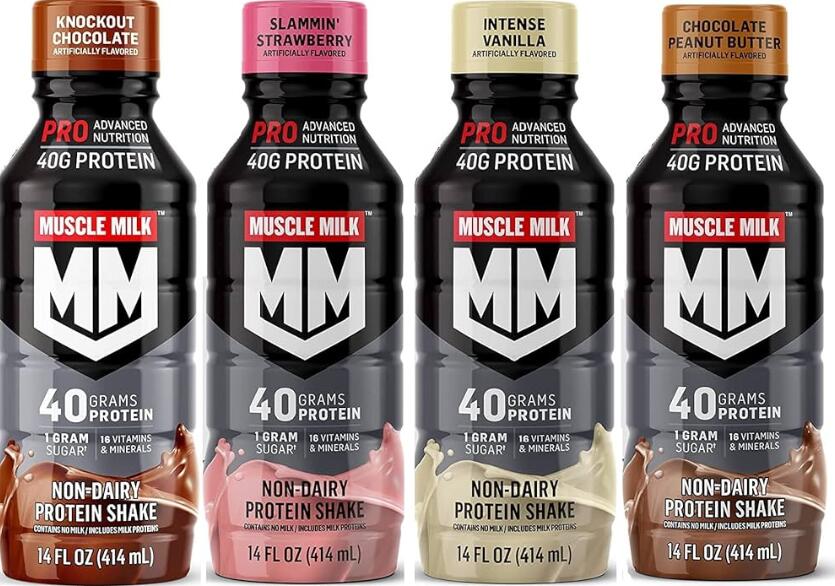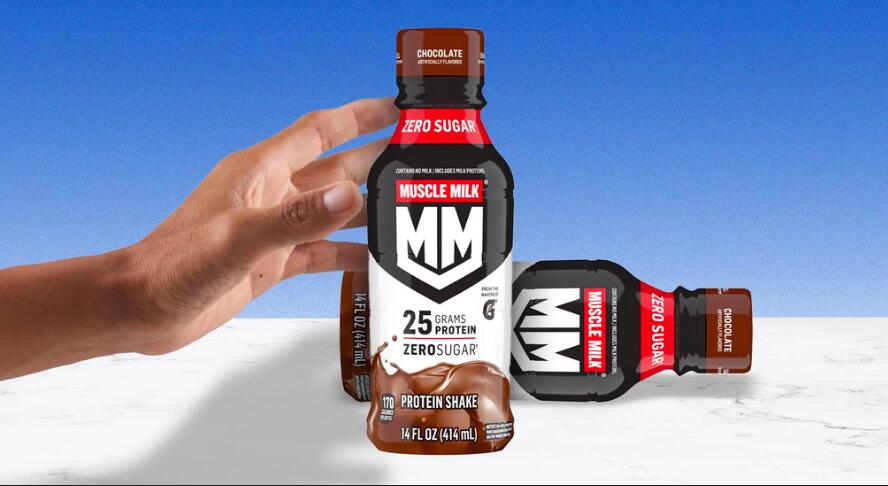Muscle Milk is a popular protein supplement that has gained widespread attention among fitness enthusiasts and athletes. This comprehensive protein shake offers a convenient way to support muscle growth, recovery, and overall health. However, to maximize the benefits of Muscle Milk, it’s crucial to understand the optimal timing for consumption. In this article, we’ll dive deep into when to drink Muscle Milk and how to incorporate it into your fitness routine.

Ingredients in Muscle Milk
Before we explore the ideal times to drink Muscle Milk, let’s take a closer look at what makes this supplement so popular.
Muscle Milk contains a blend of high-quality protein sources, including:
- Calcium sodium caseinate: A slow-digesting protein derived from milk that provides a sustained release of amino acids.
- Milk protein isolate: A concentrated form of milk protein that contains both casein and whey proteins.
- Whey protein isolate: A fast-digesting protein that quickly delivers amino acids to the muscles for recovery and growth.
- Whey protein concentrate: Another form of whey protein that contains additional nutrients like lactose and fat.
In addition to protein, Muscle Milk also provides a balance of carbohydrates, fats, vitamins, and minerals to support overall health and recovery. The specific macronutrient ratios may vary depending on the product, so be sure to read the label carefully.
Different Types of Muscle Milk Products
Muscle Milk offers a variety of products to suit different preferences and needs:
- Ready-to-drink shakes: Convenient, pre-mixed shakes are available in various flavors like chocolate, vanilla, and strawberry. These are perfect for on-the-go consumption or when you don’t have access to a blender.
- Protein powders: Versatile powders that can be mixed with water, and milk, or added to smoothies for a customizable protein boost. In addition, Muscle Milk powders have many flavors and can be easily adjusted to meet your specific protein requirements.
- Protein bars: Portable, snack-sized bars that provide a quick protein boost when you’re short on time or need a convenient post-workout snack. These bars come in delicious flavors like peanut butter chocolate and cookies ‘n cream.
When to Drink Muscle Milk for Optimal Results
Now that we have a better understanding of Muscle Milk, let’s explore the optimal times to consume this protein shake for maximum benefits.
1. Pre-Workout
Drinking Muscle Milk before exercise can provide several benefits:
- Increased energy and endurance: The carbohydrates in Muscle Milk can help fuel your workout, providing sustained energy to power through intense training sessions.
- Reduced muscle breakdown: Consuming protein before exercise can help minimize muscle protein breakdown, which occurs naturally during workouts.
- Enhanced muscle protein synthesis: Providing your body with amino acids prior to exercise can help jumpstart the muscle-building process, setting the stage for optimal post-workout recovery.
To maximize these benefits, consume Muscle Milk 30-60 minutes before your workout. This allows your body sufficient time to digest and absorb the nutrients.
A recommended serving size is typically 8-12 ounces, depending on your body weight and fitness goals. For example, a 150-pound person may benefit from 8 ounces, while a 200-pound person may require closer to 12 ounces.
It’s important to note that consuming too much protein or drinking Muscle Milk too close to your workout may lead to digestive discomfort. Experiment with timing and serving sizes to find what works best for your body.
2. Post-Workout
Consuming Muscle Milk after exercise is crucial for optimal recovery and muscle growth. During intense workouts, muscle fibers undergo stress and damage, leading to the breakdown of muscle protein. Providing your body with a quick and easily digestible source of protein, like Muscle Milk, helps:
- Repair and rebuild muscle tissue: The amino acids in Muscle Milk serve as building blocks for repairing and reconstructing damaged muscle fibers, promoting muscle growth and strength.
- Reduce muscle soreness and inflammation: The anti-inflammatory properties of certain amino acids, like leucine, can help reduce post-workout muscle soreness and inflammation, allowing you to recover faster and get back to training sooner.
- Replenish glycogen stores: The carbohydrates in Muscle Milk help replenish depleted glycogen stores, which are your body’s primary source of energy during exercise. Restoring glycogen levels is essential for optimal recovery and future performance.
For best results, drink Muscle Milk within 30 minutes of completing your workout. This window of opportunity, often referred to as the “anabolic window,” is when your body is most receptive to nutrient uptake and muscle repair.
A serving size of 12-16 ounces is generally recommended for post-workout recovery, providing a substantial dose of protein and carbohydrates to support muscle growth and replenishment.
If you’re engaging in particularly intense or prolonged workouts, consider consuming an additional serving of Muscle Milk 1-2 hours after your initial post-workout drink.
3. As a Meal Replacement
Muscle Milk can also serve as a convenient meal replacement when you’re short on time or looking to control calorie intake. Replacing a meal with Muscle Milk can be beneficial in scenarios such as:
- Busy work schedules: When you don’t have time to prepare a full meal, grabbing a Muscle Milk shake or bar can provide a quick and nutritious alternative that keeps you satisfied and energized.
- Travel or on-the-go situations: Whether you’re traveling for work or leisure, Muscle Milk products offer a portable and convenient way to meet your protein needs without relying on fast food or airport snacks.
- Weight loss or calorie-controlled diets: If you’re aiming to lose weight, replacing a high-calorie meal with a Muscle Milk shake can help reduce overall calorie intake while still providing essential nutrients and satiety.
When using Muscle Milk as a meal replacement, be mindful of the calorie and macronutrient content to ensure it aligns with your goals and overall dietary needs.
Look for Muscle Milk products that provide a balance of protein, carbohydrates, and healthy fats, and consider adding in additional nutrient-dense foods like fruits or vegetables to round out your meal.
It’s important to remember that while Muscle Milk can be a convenient meal replacement option, it should not be relied upon as your sole source of nutrition. Aim to consume a variety of whole foods throughout the day to ensure you’re getting a wide range of vitamins, minerals, and other essential nutrients.
4. Before Bedtime
Drinking Muscle Milk before bedtime can support muscle recovery and growth while you sleep. During sleep, your body enters a catabolic state, where muscle protein breakdown can occur. Consuming a slow-digesting protein, like the casein found in Muscle Milk, can help:
- Provide a steady supply of amino acids throughout the night: Casein protein digests slowly, releasing amino acids into your bloodstream over several hours. This sustained delivery helps prevent muscle protein breakdown and supports muscle growth and repair while you sleep.
- Reduce muscle protein breakdown: The anti-catabolic properties of casein can help minimize muscle protein breakdown that naturally occurs during the fasting period of sleep, allowing you to maintain more of your hard-earned muscle mass.
- Stimulate muscle protein synthesis: The amino acids provided by Muscle Milk can help stimulate muscle protein synthesis, the process by which your body builds new muscle tissue, even while you’re resting.
To maximize the overnight recovery benefits, drink Muscle Milk 30-60 minutes before bedtime. This allows your body time to digest the protein and ensures a steady supply of amino acids throughout the night.
A serving size of 8-12 ounces is typically sufficient. This can provide a moderate amount of protein without causing digestive discomfort.

Factors Affecting When to Drink Muscle Milk
While the general guidelines above apply to most individuals, there are several factors that can influence.
1. Fitness Goals
Your specific fitness goals play a significant role in determining when to drink Muscle Milk:
- Building muscle mass: If your primary goal is to build lean muscle, consuming Muscle Milk pre- and post-workout can help support muscle growth. Additionally, consider incorporating additional servings throughout the day to meet your increased protein requirements. You can aim for a total daily protein intake of 1.6-2.2 grams per kilogram of body weight.
- Losing weight: When aiming to lose weight, using Muscle Milk as a meal replacement or snack can help control calorie intake. Choose lower-calorie options and be mindful of serving sizes to ensure you’re creating a calorie deficit for weight loss.
- Maintaining weight: If you’re looking to maintain your current weight, Muscle Milk can help meet your protein needs without adding excessive calories.
2. Training Intensity and Duration
The intensity and duration of your workouts can also impact when to drink Muscle Milk. For longer or more intense training sessions, you can consider increasing your post-workout serving size.
On the other hand, if you’re engaging in lighter or shorter workouts, a smaller serving of Muscle Milk may be sufficient to meet your recovery needs.
3. Individual Tolerance and Preferences
Everyone’s body responds differently to protein supplements, and it’s essential to listen to your own body’s cues and preferences. Some individuals may experience digestive discomfort, bloating, or gas when consuming Muscle Milk too close.
If you find that Muscle Milk causes any negative side effects, try adjusting the timing or serving size.
4. Balancing Muscle Milk with Whole Food Protein Sources
While Muscle Milk is a convenient and effective protein source, it’s important to maintain a balanced diet. Whole foods like lean meats, fish, eggs, dairy products, legumes, and nuts. This provides additional nutrients and fiber that may be lacking in protein supplements alone.
Aim to use Muscle Milk as a supplement to, rather than a replacement for, a varied and nutritious diet. This ensures that you’re getting a wide range of essential vitamins, minerals, and other beneficial compounds.
A balanced approach might look like using Muscle Milk as a post-workout recovery drink. This combination can help you meet your protein needs, support muscle growth and recovery, and maintain optimal health.
Potential Drawbacks and Precautions
While Muscle Milk is generally safe and well-tolerated, there are a few potential drawbacks and precautions to keep in mind:
1. Overconsumption
Consuming excessive amounts of Muscle Milk or any protein supplement can lead to digestive issues like bloating, gas, and diarrhea. Additionally, consuming more protein than your body needs can put unnecessary strain on your kidneys. This may lead to dehydration if not balanced with adequate fluid intake.
2. Allergies or intolerances
Muscle Milk contains milk-derived ingredients, which may not be suitable for those with a milk protein allergy or lactose intolerance. If you have a known allergy or intolerance to milk proteins, consider alternative plant-based protein supplements.
3. Interaction with medications
In some cases, the ingredients in Muscle Milk may interact with certain medications, such as antibiotics or blood thinners. If you’re taking any prescription medications, it’s always best to consult with a healthcare professional.
4. Quality and purity
When selecting a Muscle Milk product, you should choose a reputable brand that undergoes third-party testing. Some protein supplements may contain hidden ingredients or contaminants that can be harmful to health. Look for products with certifications from organizations like NSF International or Informed Choice.
Conclusion
Incorporating Muscle Milk into your fitness routine can be a game-changer for muscle growth, recovery, and overall health. By understanding when to drink Muscle Milk, you can take your performance and results to the next level.
The key to success is finding what works best for your individual needs and goals. Experiment with different timing and serving sizes, and don’t be afraid to make adjustments as needed. Remember to listen to your body, stay hydrated, and maintain a balanced diet.






